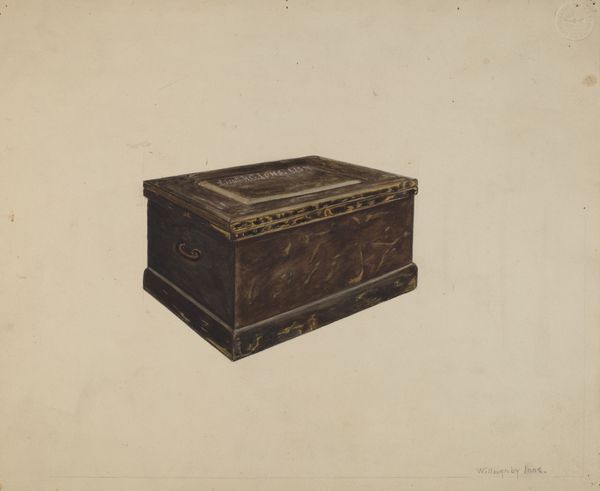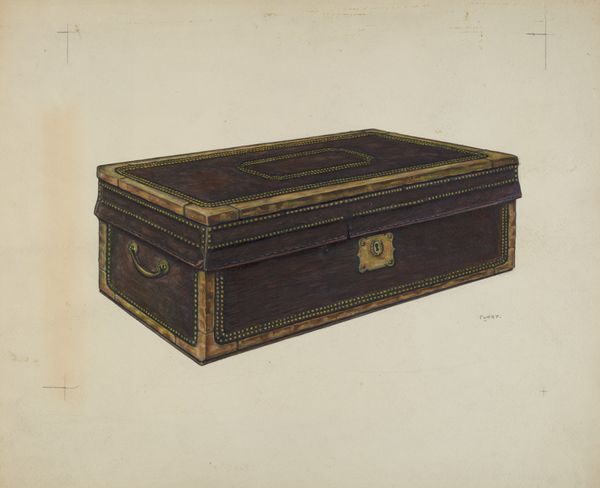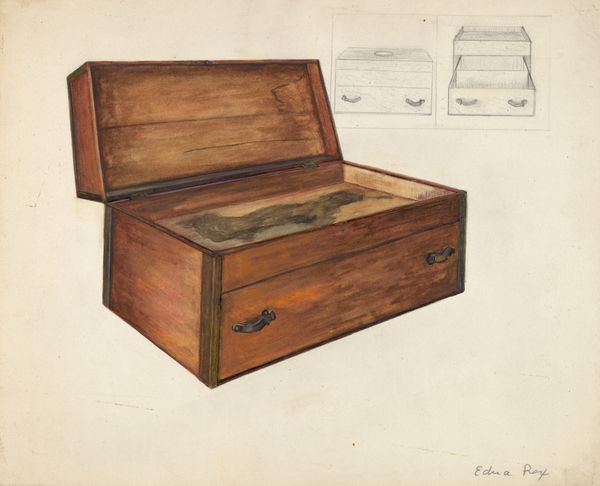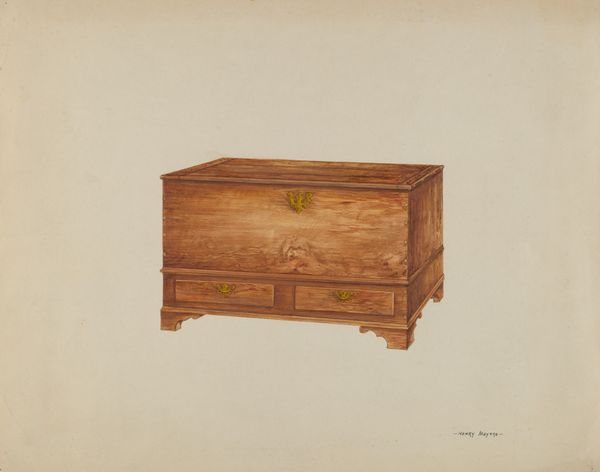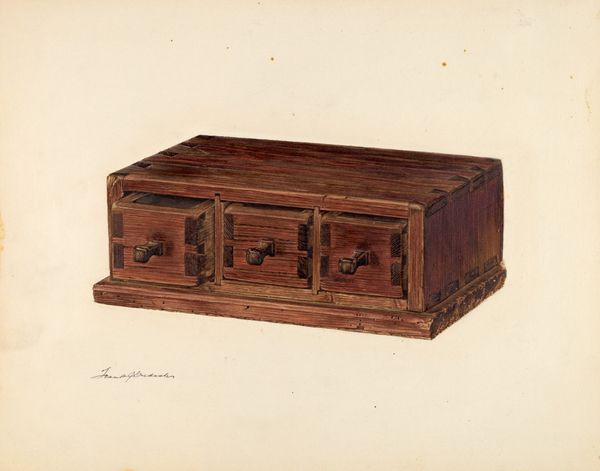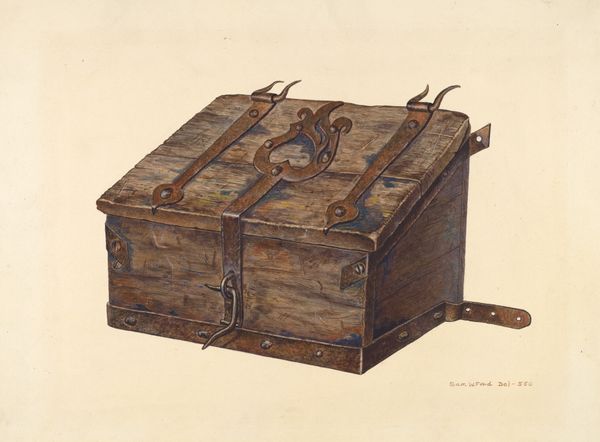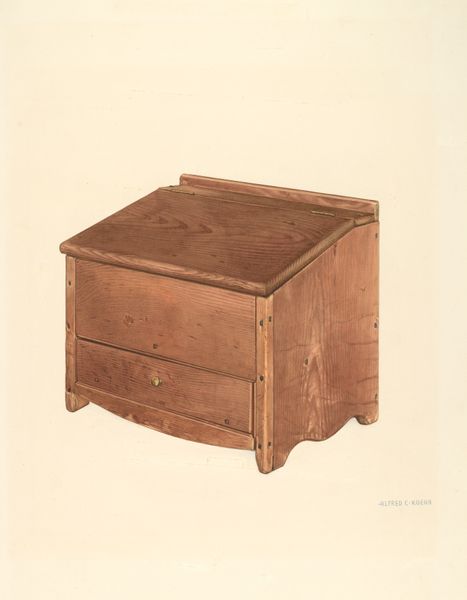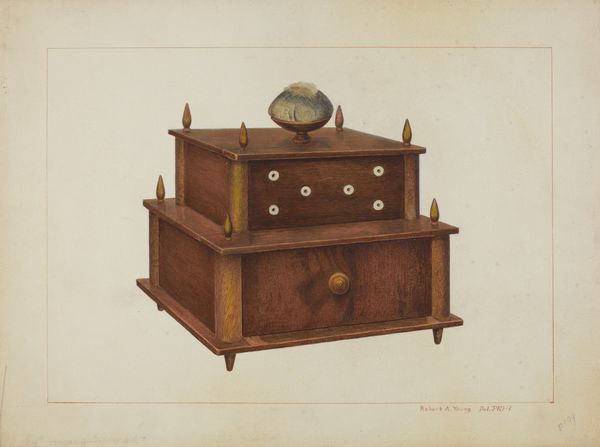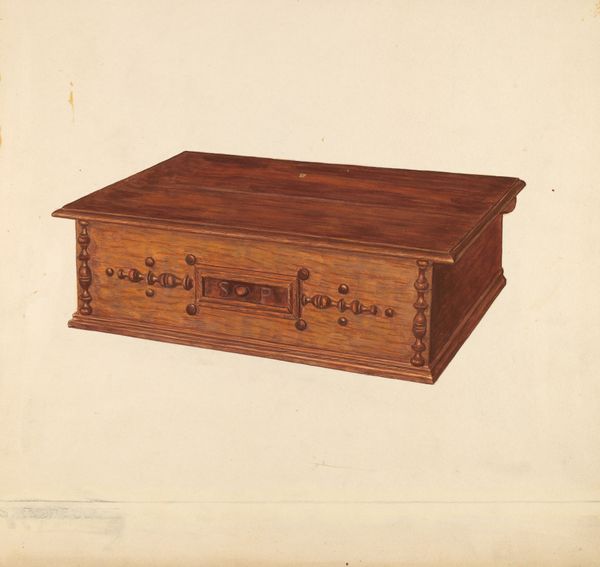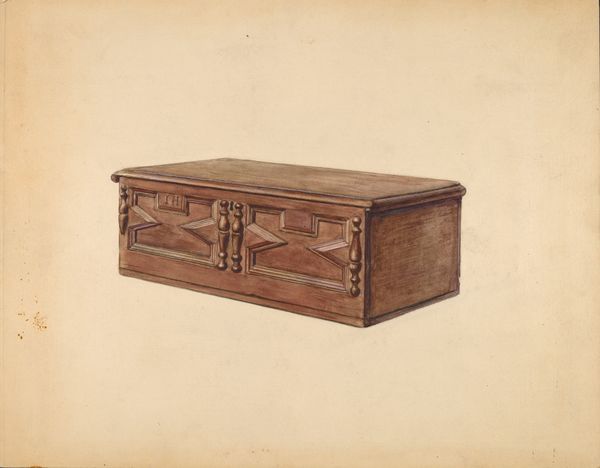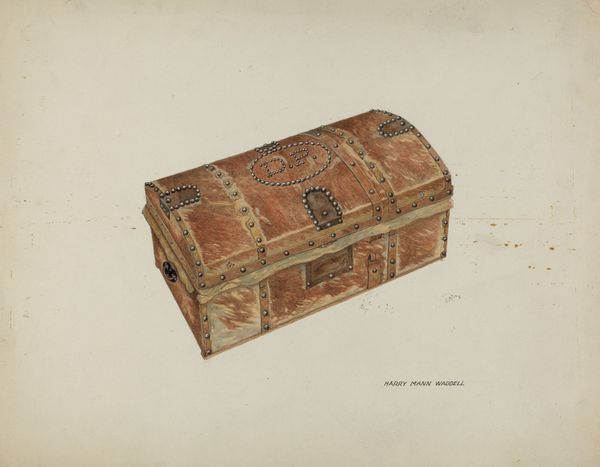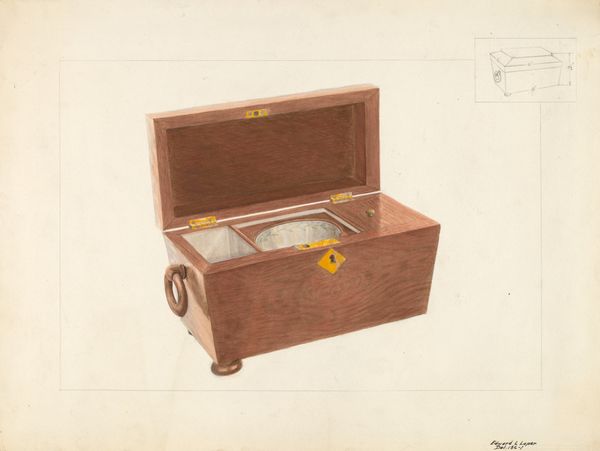
drawing, pencil
#
drawing
#
pencil drawing
#
pencil
#
academic-art
#
watercolor
Dimensions: overall: 22.9 x 28 cm (9 x 11 in.) Original IAD Object: 3 1/2" high; 6" long
Copyright: National Gallery of Art: CC0 1.0
Curator: Here we have Edward L. Loper's "Spice Box," rendered around 1927. It's quite detailed, isn't it? Editor: It is! The patina really leaps out. There's a strong sense of crafted utility...a workhorse kind of object. What strikes me is the evident weathering—you can almost smell the spices it once held. Curator: Indeed. Loper was deeply interested in the material culture surrounding him, particularly within working-class communities. I think he chose this subject to explore the domestic sphere through a working person’s functional possession. Spice boxes held significance in terms of trade, access to flavor, status within community… Editor: Right. This speaks volumes about the means of acquiring and distributing spices, the value placed on seasoning and the preparation involved in its upkeep. It almost feels like looking at an x-ray; Loper strips away the illusion, lets us peek inside its making. The craft! You see it in how each line so diligently replicates its model. Curator: Absolutely. His precise pencil strokes suggest a conscious effort to depict this object faithfully, perhaps even nostalgically. It challenges those strict boundaries—"high art" in a quotidian scene of class, labor and family life. There's even that decorative star motif on the lid – simple folk art amidst functional design. What could it mean? Editor: Good question. That star disrupts any simple categorization, forcing the functional form into almost aesthetic or decorative realm. Curator: Loper clearly aimed to capture both the tangible nature and embedded cultural meaning. A humble spice box, elevated to something more enduring. Editor: Definitely food for thought—an object of material needs, infused with touches of home. It shows that care isn't exclusive to fine arts; even the utensils we depend on become personalized, taking on a rich patina that reflects use over time. Curator: I think both the utility and the history make the object remarkable, transforming our appreciation. Editor: It does leave me contemplating how much narrative can reside within something we consider commonplace, underscoring its value.
Comments
No comments
Be the first to comment and join the conversation on the ultimate creative platform.

